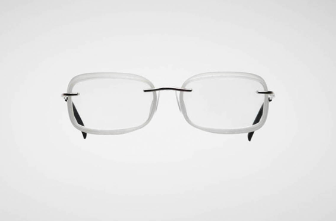Computer Vision Syndrome, Dry Eye Syndrome, Blepharitis are three separate conditions that share common symptoms – burning, itching, strained, irritated, gritty, miserable feeling eyes. However, each presents for different reasons. Take a look.
Computer Vision Syndrome
If you’re one of the millions of men and women spending significant time in front of a computer on a regular basis, chances are you’ve noticed the telltale signs of Computer Vision Syndrome (CVS): blurry vision, eyestrain, eye fatigue, as well as burning, irritated, dry eyes. These computer-related symptoms intensify the harder and longer you work due to decreased blink rates and infrequent rest breaks. Also, refractive errors such as improper screen angles or environmental factors like dust build-up on the screen, allergens (toner dust, stale air circulation, etc.) can propagate the problem. But, ultimately, the source of irritation lies in an instability of the ocular surface as explained below.
Dry Eyes
So while the computer is the aggravator in CVS, a whole host of factors is behind the very common and very irritating condition known as Dry Eyes. Everything from advanced age, contact lens usage, Blephartitis (inflammation of the eye lid),thyroid conditions, specific medical conditions (Sjogren’s syndrome, Parkinson’s, rheumatoid arthritis, lupus and diabetes), certain medications, air-conditioning/heating, smoke, hot/dry/windy climates, hormonal changes, and vitamin A deficiency can cause the quality of the tear film across the ocular surface to diminish. When this happens the eyes can itch, burn, tear excessively, become sensitive to light, and become irritated and red.
Blepharitis
Blepharitis is an inflammation of the eyelids caused by a bacterial infection or dysfunction of the meibomian gland. When this gland becomes plugged or infected the oil layer necessary to retain tear film diminishes, resulting in rapid evaporation of the water component of the tear film.
The Ocular Surface
Both CVS and Dry Eye symptoms are the result of tear evaporation, resulting in inadequate dispersal of tear film across the ocular surface. This causes an imbalance in the four major parts of the eye – the cornea, epithelium, tears, and eyelids – which are vital to keeping the ocular surface well-lubricated and healthy.
Cornea
The Human’s Windshield. The cornea not only provides the structural bearings and front-line protection for your eye, but also adjusts the light that will be “seen” as it passes through your eye. For these reasons, the cornea is commonly referred to as “the windshield”.
Epithelium
There are only .45mm to .6mm of cell layers standing between your eyes’ overall happiness and unhappiness. These five layers, called the epithelium, form the transparent, protective barrier that keep the cornea in good health. Acting as the primary refractive “lens” surface, these cells control how much water, salts, and chemicals pass into the cornea, making it a natural antibiotic against bacterial infections. When the epithelium is kept lubricated, smooth and healthy, the result is clear, problem-free vision.
Tears
Tears are surprisingly more complex than you’d think. They’re actually comprised of three parts: a mucous layer for tear adherence to the eye, an aqueous layer made of 98% water with small amounts of salt, proteins and other compounds, and an outer lipid layer that seals in moisture and prevents evaporation.
Tears are responsible for three major functions:
- Making the corneal surface optically smooth by “filling in” any minute surface irregularities.
- Keeping the cornea and epithelium well-hydrated to prevent injury or death of the epithelial cell from dehydration.
- Inhibiting the growth of microorganisms on the cornea and epithelium with that constant flushing and infection-fighting action of the tear film.
Eyelids
Your eyelids house the glands necessary to make tears, the crucial moisture and barrier protectors of the eye. With each blink, your eyes are provided with the hydration necessary to keep them healthy and happy. Normally, you blink between 10-15 times a minute. This rate diminishes significantly when working on the computer, watching TV, reading, or engrossed in something you literally can’t take your eyes off of. After a while, dehydration sets in – and so does the irritation.

 SeeFit Megs $149.00
SeeFit Megs $149.00